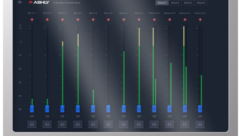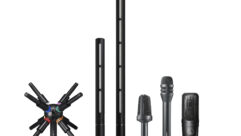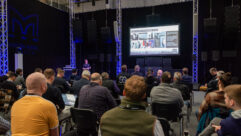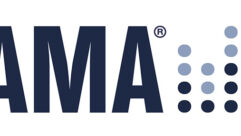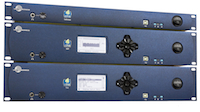

Lectrosonics ASPEN SPN Trio Audio Processor
Apr 14, 2011 3:53 PM,
by John McJunkin
A heavy-duty, three-in-one mixing, processing, and telepresence solution.
Lectrosonics ASPEN SPN Trio Audio Processor
Lectrosonics is well known for developing high-quality technology, particularly in the wireless domain, with products serving video, film, and broadcast production industries, as well as houses of worship, theater, sports, and others. Additionally, Lectrosonics delivers high-quality solutions for conferencing applications—in particular, the ASPEN series of processors. I took a look at the ASPEN SPN Trio processor, and discovered it to be powerful, versatile, and very reliable. Contractors and integrators developing conferencing spaces will definitely want to be aware of the ASPEN series, particularly if they’re looking for an advanced solution.
The name “Trio” arises from the three principal components of the system: a matrix mixer, telephone hybrid, and power amplifier. The system combines the principal boards from ASPEN SPN812 and SPN Conference units and adds a Class D power amp. The system facilitates a mix bus with as many as 48 channels and can bridge up to three sites via two codecs and a telephone line. It offers eight inputs and 12 outputs —all balanced analog. It can be combined with other ASPEN input/output devices to expand the number of inputs on an unlimited basis and the outputs up to 48. Lectrosonics cleverly designed the system to automatically configure a master and all slave units correctly when units are stacked. Additionally, master and slaves are automatically synchronized to compensate for any throughput delay. An Analog Devices, Inc. SHARC processor is employed to provide the necessary signal routing and processing, which is quite extensive and sophisticated. Another attribute that impresses me is that all signal processing is available on all channels at all times, unlike other similar products that make a limited pool of DSP resources available, but not enough to offer them universally.
The Trio’s 2RU front panel is ultra simple, but the display and controls grant complete control over the entirety of the system’s parameters. Most users will likely prefer controlling the system via computer or third party interface, but if a computer or interface is not available, the front panel does the trick. From left to right across the panel are found a 1/4in. headphone jack and output level control, LCD alphanumeric display, and navigation controls, including a very clever encoder wheel. Further right yet are a USB port, three status LEDs (comm, alert, and power), and a power switch.
The Trio’s rear panel features, from left to right, an IEC power inlet, cooling fan outlet, RS-232 port, RJ-45 Ethernet port, DB-25 programmable input and output ports, proprietary RJ-45 “ASPEN” network ports, RJ-45 remote control ports, eight inputs, 12 outputs, power amp outputs, line I/O, and RJ-11 POTS telephony ports. All analog audio inputs and outputs are of the Phoenix variety.
The Trio’s inputs offer delay, filter, compression, noise reduction, and automatic digital feedback elimination. Obviously, delay, filtering, compression, and feedback elimination are pretty pedestrian processes, but the noise reduction here is a really nice step up. The noise reduction mechanism is based on 1/3-octave analysis applied to downward expansion with a range of reduction from 6dB to 35dB. Lectrosonics claims in its promotional materials that up to 18dB of noise reduction can be achieved with virtually no audible artifacts, and additional noise reduction with subtle artifacts is available for extreme situations. I would agree with this claim. It sounds impressive. Each of the Trio’s output channels offers delay, parametric EQ, compression, and limiting.
Another major function of the system is auto mixing. The mixing happens at matrix crosspoints, which facilitates some pretty sophisticated possibilities. There are five distinct auto-mix behaviors available: direct, auto, phantom, override, and background. Direct behavior is simply the absence of attenuation, auto behavior is regular gain-proportional auto mixing, phantom behavior is a special mode for mix-minus systems, override behavior makes a signal dominant in auto mixing activity, and background behavior makes a signal subordinate in auto mixing activity.
The system can be accessed and controlled by three different means, excluding front-panel control. Specifically, Ethernet, RS-232 serial, and USB ports are available to grant control over the system. The USB port facilitates the updating of the system’s firmware, and TCP/IP access enables remote control via the internet. Numerous third-party user interfaces, for instance from Crestron, are supported. This is particularly nice if a clean, aesthetically pleasing solution is desired for the boardroom. A sophisticated acoustic echo cancellation algorithm known as ASPEN S-AEC facilitates powerful echo cancellation for conferences in particularly live spaces. This system works to converge as quickly as possible, and then to continuously attempt to improve the cancellation depth. Additionally, it deeply cancels far-end audio from local loudspeakers.
Lectrosonics ASPEN SPN Trio Audio Processor
Apr 14, 2011 3:53 PM,
by John McJunkin
A heavy-duty, three-in-one mixing, processing, and telepresence solution.
The Trio ships with a Windows application called ASPEN Control Panel, which facilitates control over every parameter in the system. The application’s graphical user interface offers tabs across the top of the display that show what aspect of operation is being monitored and controlled. In particular, the first tab, Activity, is an overview of overall operation, including input and output channel levels, conferencing input and output levels, and acoustic echo cancellation activity. Other tabs focus in more detail on inputs, outputs, signal processing, matrix operation, events, and so forth. The interface provides rich detail, a great example of which is the filter display, which graphically represents the spectral curve of the applied filter, along with the filter’s effect on phase.
The Lectrosonics ASPEN SPN Trio is a very powerful conferencing and telepresence solution that offers sophisticated matrix mixing, auto-mixing, signal processing, and acoustic echo cancellation, along with POTS bridging and a power amplifier to supply speakers in the conference space. The construction of the unit feels bulletproof and its operation is surprisingly simple, considering the levels of sophistication of which it’s capable. The audio quality is excellent, and it facilitates extensive sculpting of the signal ultimately heard by the users. The auto-mixing sounds very good, largely due to the transparency yielded by its proportional gain algorithms as opposed to the gate-oriented mechanisms of other auto-mixers. In consideration of the tremendous power of this device, the sticker price is well justified, and it is worthy of a look for any contractor who needs a sophisticated system for conferencing and telepresence.
John McJunkin is the principal of Avalon Podcasting in Chandler, Arizona. He has consulted in the development of studios and installations and provides high quality podcast production services.
Product Summary:
- Company:Lectrosonics, Inc.
www.lectrosonics.com
- Pros: Reliable, sophisticated auto-mixing and processing.
- Cons: Software is Windows-only.
- Applications: Conferencing, Telepresence, Signal auto-mixing, and distribution.
- Price: $5,125
Specifications:
- Matrix: 48 mix buses with full output matrixing
- ASPEN Port: 1Gbps control and audio data between ASPEN units
- Inputs: 8 mic/line
- Gain: 0dB—56dB, programmable in 8dB steps
- Input Level: 0dBu nominal, max 20dBu
- Input Impedance: 8kΩ differential mode, 2kΩ common mode
- Phantom Power: True 48V
- Dynamic Range: 102dB
- EIN: -127dBu (20Hz–20kHz, unweighted)
- THD + Noise : 0.01%
- Programmable Inputs: 30
- Programmable Outputs: 16
- Echo Cancellation: Centralized, bridgeable for Telepresence
- AEC Tail Time: 128ms
- Line EC Tail Time: 48ms
- Outputs: 2 speaker outputs (10W) 1-8 line level (0dBu), 9-12 mic/line level (0, -20, -40dBu)
- AEC Bandwidth: 10kHz
- Overall Bandwidth: 21kHz


